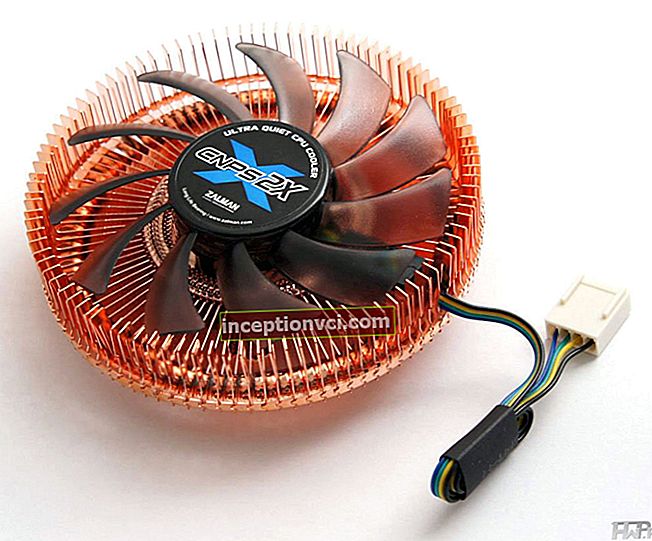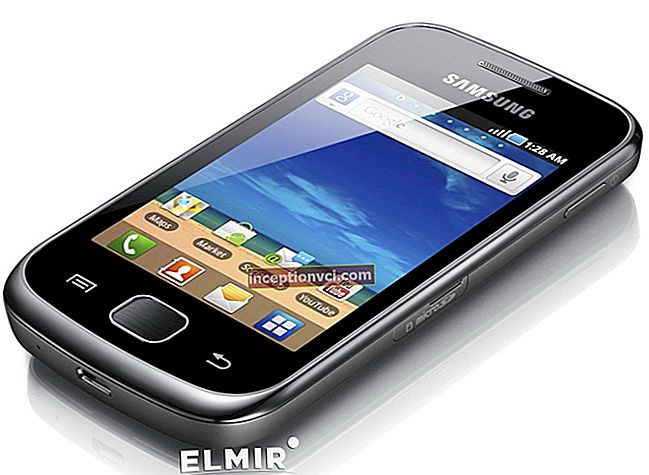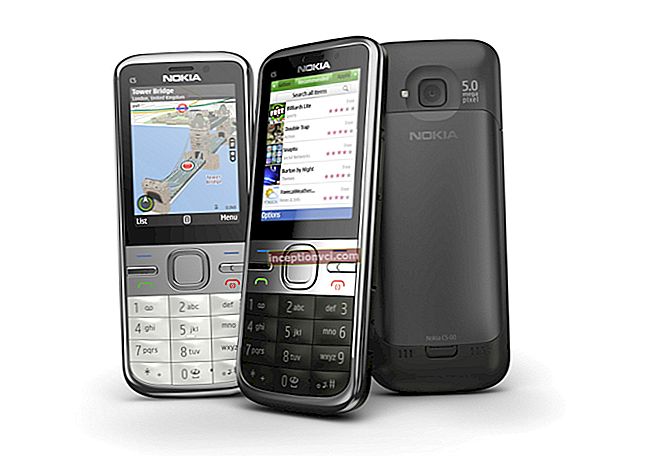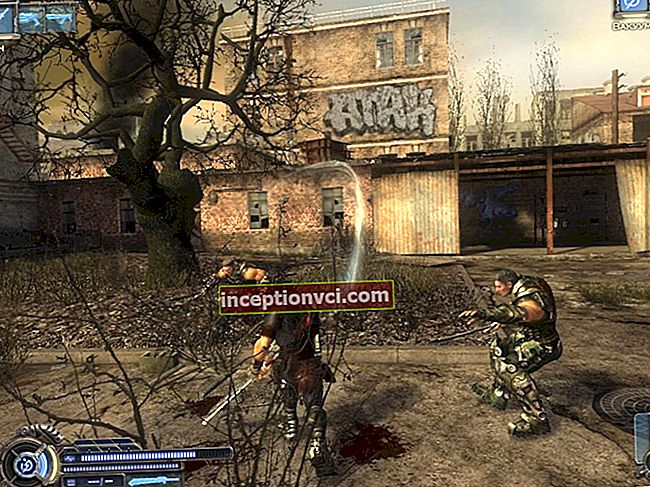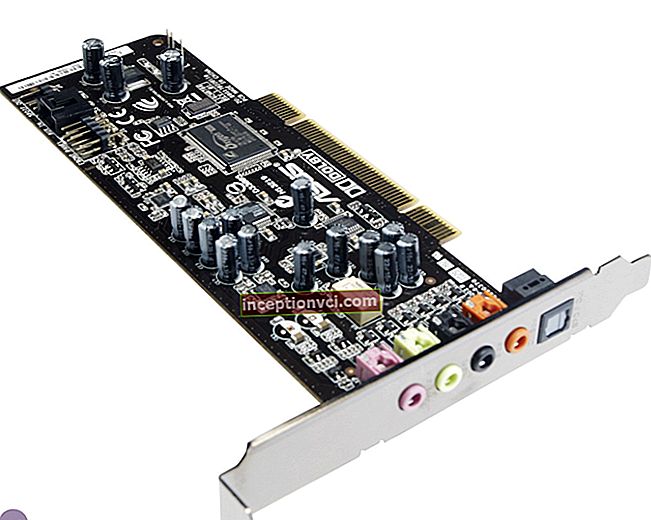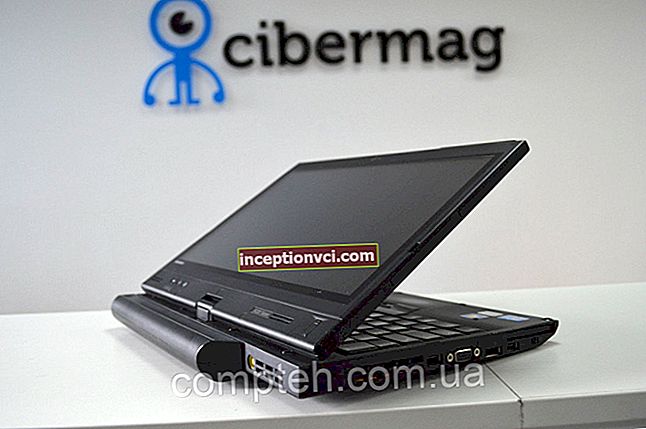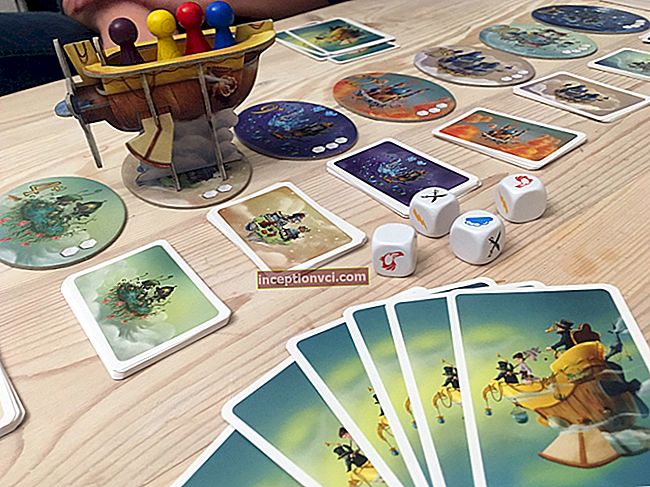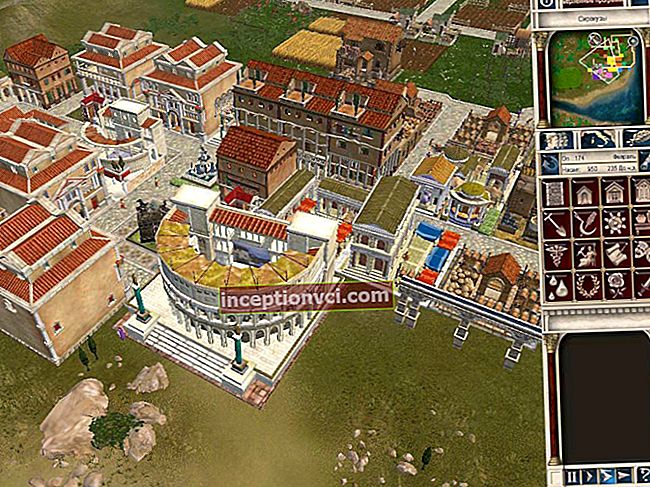Hold on and don't let go
Push-to-talk in English means "push and talk". This is the difference from ordinary calls - all communication is "tied" to one button. With its help, the PTT menu is called up, a call is made and communication takes place.
The use of this function will be especially appreciated by those who communicate a lot and make many calls lasting a few seconds. Such people do not have to pay for the connection and call back other friends or colleagues in turn. They will be able to conveniently and quickly connect with the right person or company and communicate with everyone at an affordable price. RTT makes it possible to simultaneously communicate with twenty interlocutors. Moreover, it is not at all necessary to call each of them. It is enough to create a group of friends and connecting with it, get in touch with all of its subscribers at once. The interface of the Push-to-talk menu in smartphones even contains a special section called "Online", where all contacts from the list that are available at the moment are located. In Motorola phones this nuance is solved differently: there is a smiley next to each contact, which shows whether it is available now. So what to do when the service is already activated but not tested yet
1. It is necessary to create a list of contacts with whom the user plans to communicate via PTT. Even if they are in the address book, do not be lazy to re-enter them in the Push-to-talk menu. Not only are these contacts independent of each other, there is a big difference between them - the contacts in the address book are saved in the phone memory or on the SIM card. And the list of contacts in the push to talk menu is saved online, making it impossible to lose it. Every time a SIM is inserted into another device, contacts appear there automatically. This is important, since no one is insured against the loss of a phone or SIM-ki. When creating a group, you should definitely give it a name, otherwise it will not be saved, and then you will have to call each subscriber separately.
2. When the address book is created, you can safely call someone. To do this, select the desired contact and press a special button located on the side of the phone. In smartphones, the call key plays its role. If you need to call a group of people at the same time, you must select the name of the group.
3. During a call, it is better to look at the screen and keep the phone at a distance of about ten-fifteen centimeters from your mouth. The display shows that a call is in progress, then a connection, after which you can press the side button and speak. After speaking, you must release the key, otherwise the interlocutor will not be able to answer. The fact that he has sent a reply voice message is signaled by the word "I listen" on the screen of the device - after its appearance, the voice of your counterpart should be heard. This is how easy the process of negotiations on a walkie-talkie is. The main thing is not to confuse the sequence: for example, if you do not save a contact, you will have to dial it again every time, since there is no support for automatically memorizing the last calls.
Half duplex
In terms of technical implementation, this communication method is very different from ordinary calls. The mobile connection used for the call is full-duplex - information is transmitted over the communication channels simultaneously in two directions. Thus, you can not only listen to your interlocutor, but also interrupt him at any time. Ethical standards, of course, must be observed, but the main thing is that technically there is such a possibility.
So, in order to reduce the ardor of the talkers, they created another type of communication, which uses, among other things, the Push-to-talk technology - half-duplex, when information at a given time is transmitted only in one direction. That is, you can either talk or listen - as when communicating on a walkie-talkie. And for users, it's a great way to save time and money.It is easy for everyone to communicate their plans at the same time and hear the reaction within a minute.
Motorola V177

This phone looks expensive, which is of no small importance today. Besides, at first glance, one can guess "family ties" with Motorola PEBL U6. However, an external antenna (not a common phenomenon now) and a more flattened tip give this model a personality. It has a minimal set of functions and is suitable for people who pay little attention to the multimedia capabilities of the phone and communicate a lot via voice communication. For them, Push-to-talk (by the way, while this is the cheapest model on the market with this function) will be very appropriate, since it will help to significantly save money, and the ease of use and long-term operation on a single charge only enhance the impressions of the device. In addition, the terminal allows you to work with MMS and SMS, has standard options in the form of an alarm clock, diary, calculator, games. The PTT service is easy to activate. First you need to go to the phone settings and enable the Push-to-talk option. Then return to the menu of this option, which is accessed by pressing a special button located on the left side of the case. After that, four menu sections appear: "PTT Contacts", "PTT Groups" (not to be confused with those in the phone's address book), "Quick Groups" and "Settings". The main thing is not to forget to turn on the microphone when using this function, otherwise you may not hear anything or you will have to put the terminal close to your ear. Then why, in fact, PTT, if you do not use the device as a walkie-talkie. GPRS settings are automatically sent to each subscriber immediately after activating the card, so all that remains is to call the operator and count down the minutes until that long-awaited moment when the voice of a friend or mother is heard from the speaker (by the way, the sound is transmitted perfectly, so you don't risk confusing your boss with your neighbor) ...
Motorola L6

The device is a simplified version of the SLVR L7 model. However, before you pay a few hundred hryvnias, you should decide what exactly you need. If a budget clamshell does not suit you and you want something more equipped, but not too expensive, Motorola L6 will come in handy. The L6 recently launched in new colorways, including pink, which comes with a pale pink lip gloss. Not that it's a great bonus, but customers will be pleased. Let's see the advantages of this terminal. First, the robust aluminum alloy casing. Secondly, it has Bluetooth, which greatly speeds up and simplifies the transfer of images and music files between devices. By the way, the device has a built-in VGA-camera with the ability to record video with sound. However, the memory capacity is small here, so the number of shots is limited. In order to activate the Push-to-talk function, you need to go to the phone settings, find the section with PTT there and activate this service. Then you need to contact the operator to activate Push-to-talk. The interface is simple and does not differ in any way from that used in other models of this manufacturer: the left function key calls up a menu, the right one - allows you to update existing settings. To talk on Push-to-talk, you need to press the button on the left side of the device and do not forget to turn on the microphone in time.
Motorola SLVR L7

Not everyone understands why they created faceted glasses, how mobile phone users can already touch another facet of the ultra-thin device. The thin anodized aluminum terminal is surprisingly good as a walkie-talkie. To be honest, this is one of the few devices with which it is convenient to communicate by pressing the PTT button - due to the absence of bulky parts and the average weight. If you drop this phone in a hurry, it will remain intact and will not fly apart, but it also has an Achilles heel - the display. Traces of fingers and cheeks remain on it, which can confuse delicate aesthetes. Although, by and large, compared to its excellent characteristics, these are trifles.
The terminal is positioned by the manufacturer as a fashion product with an unusual design, but for users, first of all, its capabilities are important. So, this is an inexpensive device with a good set of functions in the form of an MP3 player, a micro SD memory card, a Bluetooth module and a VGA camera.
To enable the Push-to-talk option, you need to press the button on the left side of the device, which shows two horizontal stripes. But you won't be able to activate this function right away, so first you should go to the device's settings and find the "PTT Settings" section where you need to enable the PTT service. Then you can safely return to the Push-to-talk menu. By calling the operator to the customer support center, the user will be able to use the service in twenty minutes. The voice in this phone is transmitted well, the connection is fast, the main thing is to get used to holding the button during a call.
Motorola V360

In order to keep up with the abundance of new technical proposals, today it is not at all necessary to purchase expensive devices. It is quite possible to get by with devices of the middle class, the capabilities of which are usually sufficient even for the most demanding users. For example, the Motorola V360 will appeal to music lovers due to the presence of an MP3 player and support for micro-SD memory cards (64 MB in the delivery set). Sentimental persons can view pictures in the photo album: despite the use of an outdated camera in the phone, when shooting in bright light conditions, the images are quite good for viewing on the terminal display. Residents of virtual WAP streets will be satisfied with the work of the EDGE browser (class 10). In general, I would like to note the efficiency of the terminal as a whole, both in the case of the Internet and in working with the menu. This also includes the installation speed of Push-to-talk. To activate this function, you first need to enter the general settings of the device, where you can find the section "PTT settings". There you should turn on the PTT service, and then return to the usual "Options" menu. By clicking on the left side button, in the menu we find the Push-to-talk settings, where the folders with GPRS settings, server and personal settings are located. However, it is best to contact your operator to successfully activate PTT. This procedure - call and activation - will take about twelve minutes. After that, you can make the first "trick". In a word, this function works fine in this terminal. Naturally, this cannot be compared with face-to-face communication, but the effect of presence is very strong. I was very surprised by the realism of voice transmission: no distortions were observed, it is heard very well - the main thing is to maintain a distance between the sound source (that is, the mouth) and the microphone, otherwise the interlocutor will be furious with your mighty bass (or, even worse, squeaky falsetto).
Nokia 3250

The first device that represents the line of smartphones in this review. It is fundamentally different in terms of functionality and, like its brethren, works in a completely different way with Push-to-talk. This "music guy" is head over heels - he loves listening to an MP3 player with advanced settings and a stereo receiver. His hobbies are filming, filming and filming again. He will take pictures of everyone and everything, and others will be satisfied with the result. And all because it has a secret weapon in the form of a two-megapixel camera and a large colorful screen. Indispensable helpers for setting up the service and the program will be a data cable (supplied with the terminal) or a micro-SD memory card (512 megabytes is included in the delivery set). For those who have not had to deal with this smartphone, we will tell you that the removable memory carrier can be inserted into the device by rotating its lower part 180 °. On the inner surface between the movable parts of the case there is the same miniature slot for memory cards.
Using the file manager, you need to find the program on the card and install it. After that, a new red icon will appear in the main menu. Its contents are presented in three sections - "Contacts", "Calls" and "Online".Contacts must be entered into the PTT menu by yourself, regardless of their presence in the address book. You can create a whole group of contacts, or even several groups, and as a result, during a PTT connection, you can simultaneously contact all of their members. If, of course, they are available at the moment. And to make it easier to understand who will be able to get through, you can first go to the "Online" section and see which of the subscribers has PTT turned on. After that, it remains to press the button and wait for the connection.
Nokia 6600

We will not be afraid to call this delightful phone a good old friend and, may Zeus prolong his years, share the joy with him. However, less than a couple of years have passed, and the Nokia 6600 has a chance to take advantage of one more advantage - to allow owners to communicate via Push-to-talk. The device cannot boast of an advanced resolution and color gamut of the screen or a camera matrix of several megapixels, but this is one of the two terminals in the review (the second is the newest Nokia N80), which, in addition to Bluetooth, has an infrared port. So if your laptop is equipped with an infrared port, but does not support wireless data transfer, you can safely use this device to transfer photos or music.
It will not be superfluous to remember that the PTT function in this model is activated by the paired side volume control key - for this you need to press and hold the top button. Conveniently, each cell in the address book can have a field with a PTT address, and contacts automatically appear in the list of available for communication. The Push-to-talk application can be downloaded via Bluetooth, a data cable or using a memory card (included in the package - 32 MB). As in all Symbian smartphones, the utility is displayed in the main menu. To make a call, you need to select a contact and press the call button. During a conversation, hold down this key only during your own monologue, then release the button to hear the interlocutor.
Nokia 6630

The Nokia 6630 is adaptable to many technical environmental conditions. Having appeared, this smartphone remains fully functional in the field of technologies that are just coming to our country today. For example, happy owners of 6630 will not have to change their model to be able to use the new PTT service. This is the first Nokia Series 60 smartphone to work in GSM and UMTS standards. It has a decent 1.3-megapixel camera, high-speed Internet access and an MP3 player. And to activate Push-to-talk, you need to download a special application to the memory card (MMC-mobile). If you insert the card into the switched off phone, after switching on, a red window with the inscription PTT will appear in the main menu. WAP and GPRS settings in new models are set during certification, so you can open the application and briefly study it, send a voice message. The utility interface is simple and intuitive. It consists of several parts - "Contacts", "Calls" and "Online." You need to enter new contacts in the PPT menu regardless of their presence in the address book. twenty people.) This is a great money-saver if you don't think about whether you can hear the other person on Push-to-talk in bad weather. To avoid this problem, it is sometimes easier to just turn on the speaker.
Nokia 6681

Despite the fact that this phone can hardly be called a novelty, it is worth paying attention to. If only because it supports the Push-to-talk function. In view of this, owners of Nokia 6681 do not need to change the device. In addition, there are hardly any users who do not like the ability to surf the Internet with maximum speed. All thanks to EDGE technology - you no longer have to shed crocodile tears, missing the World Cup because of the ridiculous speed of the Internet (unless, of course, the operator is stingy). However, all users of advanced technologies (in this case, PTT) are primarily interested in the implementation of this function.The first step is to load a special application into the terminal. This can be done easily with a data cable or MMC-mobile memory card. By the way, the delivery set of the smartphone includes a card reader that can be used as a removable storage device, and then insert the card into the terminal and open the program. After installing the utility, its shortcut will appear among the other icons of the main menu. By selecting it, the user will see a window at the top of which shows which folder is currently open. It is difficult to get confused here. To make a PTT call, select the desired nickname and press the call button (on the left with the image of a green tube). In general, Push-to-talk works in the background, so a call can come at any time - the main thing is not to turn off the microphone. Voice speed and quality are excellent, so if you like the Nokia 6681, enjoy Push-to-talk and high-speed Internet.
Nokia 7610

The time has come when the familiar smartphone can boast of new features. In this case, there is no need to purchase anything or pay extra. The Push-to-talk function is implemented in the same way in all Nokia smartphones: using the file manager on the memory card, you need to find the program, install it and look for the red push-to-talk icon in the main menu. When the latter is found, it remains to be launched. The utility runs in the background, so a familiar voice can be heard at any time. Naturally, it is impossible to answer right away - you must first press the leftmost control key and only then speak. Then release the button and listen to the interlocutor. Everything is simple, you don't even have to get used to the unusual keyboard of Nokia 7610. The interface of the utility is simple and straightforward, it consists of three items: "Contacts", "Calls" and "Online". The user can create contacts and entire contact groups in which several people are involved at once (up to twenty). Thus, calling one group (by name), the subscriber simultaneously connects with all its contacts who are currently online. The connection quality is excellent, the voices are not distorted, so the recognition of any of the group's subscribers is guaranteed.
Nokia N70

As a rule, gadgets are stuffed with various functions to the very antenna, often their heads are dizzy from so many talents and they begin to doze right during working hours. Such five minutes with sadness in their voice users call "frozen" and understand how much they themselves "depend" on such a compact device. Only now, maybe Nokia N70 is as appetizing as grandmother's preparations, but he doesn't like the quiet hour of the day. This is because it works under the control of the eighth version of Series 60. With it, you can safely go on vacation, where the GSM standard is no longer remembered - the terminal was created for third generation networks. And the Cathedral of St. Peter on the bright large display will look so realistic that your friends will not even dare to doubt that you spent your vacation in Italy.
It is worth noting such things as an FM stereo receiver, Push-to-talk, a Bluetooth module and a two-megapixel camera. With 21 MB of built-in memory, the device has a slot for MMC-mobile cards. The phone comes with a 64 MB memory card, which is enough to download the application, thanks to which you can use the PTT function. Unlike previous Nokia smartphones, in the N-series this utility is stored not in the main menu, but in the "My Applications" section. Although, for convenience, you can move the application to the menu. To call someone, just select the subscriber and press the green call button. The connection usually takes a few seconds. The voice is heard well. Of course, you can't hide the device in a shirt pocket, but who said that the military has compact radios?
Nokia N80

By purchasing the N80, the user gets even more dots on the screen, even greater camera resolution, and even more pleasure in style. The device loves excesses in everything and people inclined to such a lifestyle.He even has two eyes to keep track of everything that is happening around.
To put it simply, it is a small Symbian smartphone running on 3G networks. With a large screen stretching 352 pixels wide and 416 pixels high. Terminals with such displays are not lying around on the market and are at the dawn of their popularity in our country.
Another "big merit" of Nokia N80, of course, is the three-megapixel camera and the front one for video telephony. In general, there is everything. Do you want fast Internet - please. Wi-Fi or FM stereo receiver too. There is also a memory card in the delivery set with a capacity of 128 MB. In a word, complete freedom of action, and the card will come in handy in a difficult task - communication on RTT. After installing the program, a red shortcut will appear in the main terminal menu. In its content, the user will see the PTT menu, which consists of contacts, quick group and settings. Contacts for this section must be created regardless of whether they are in the address book. It is convenient to call the entire group of contacts at once, since this makes it possible to simultaneously communicate with a dozen (or even two) friends and significantly speeds up the dialing process. The speed of Push-to-talk in Nokia N80 is high, the connection takes just a few seconds. The voice transmission is so realistic that sometimes you get the feeling that the interlocutor is behind you. Cool, because even during a telephone conversation, the voice is sometimes distorted.
Samsung SGH-D720

Small in stature and moderately well-fed, the terminal fits comfortably in the palm of your hand and looks great in it. The business cohort will love his ability to showcase Microsoft Office and PDF files, although they cannot be edited. Learners like no one else need electronic cheat sheets. The teacher is unlikely to guess the true reason for the student's constant, interested gaze directed at the phone screen. Most likely, he will be sure that the unlucky student is keeping track of how much time is left until the end of the pair. Well, the longer it goes astray, the more you can read on the large and bright display of the Samsung SGH-D720. Pictures taken by the built-in 1.3-megapixel camera look no less colorful on it. There is a flash for shooting in low light, and the most interesting scenes can be captured on video.
In addition to all these advantages, the SGH-D720 is hardly the only Samsung smartphone that supports the Push-to-talk function. It is implemented in the same way as in Nokia smartphones. First you need to download a special application and install it. The easiest way to do this is with a cable or Bluetooth, but those with a card reader can copy the file to the memory card that comes with the package. Then you should find the file manager in the "Tools" menu and use it to install the application. The corresponding shortcut will appear among the icons of the main menu, and to make a call, you need to look for it there. The program interface is the same as in all previous terminals, the same can be said about the voice transmission rate in the walkie-talkie. The only remark is that if you are talking on PTT in a closed state, it is inconvenient to press the call button.
